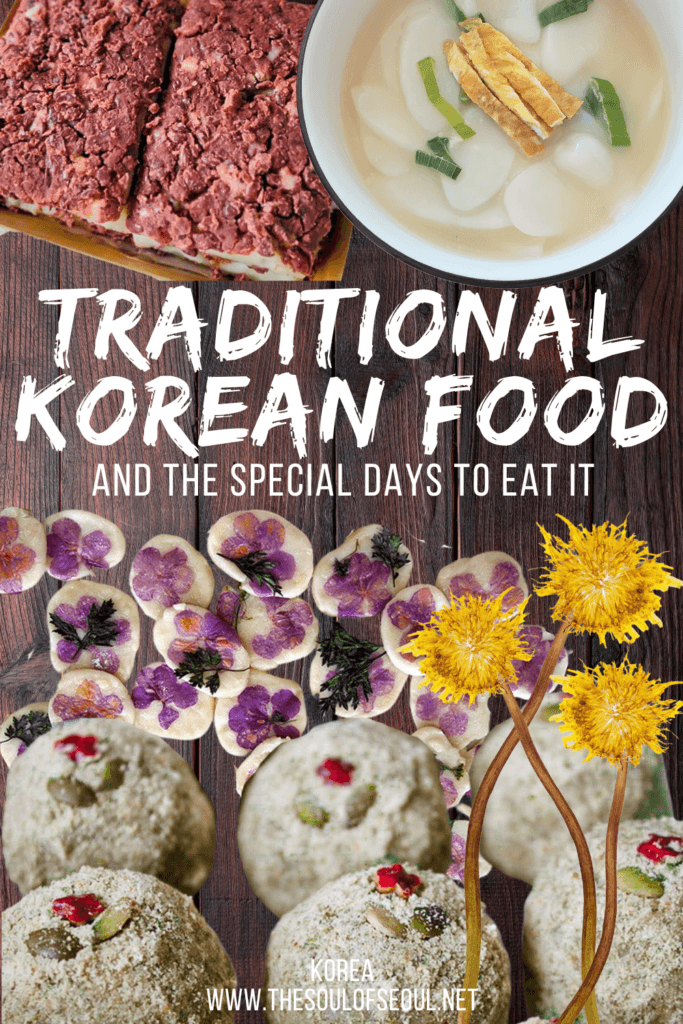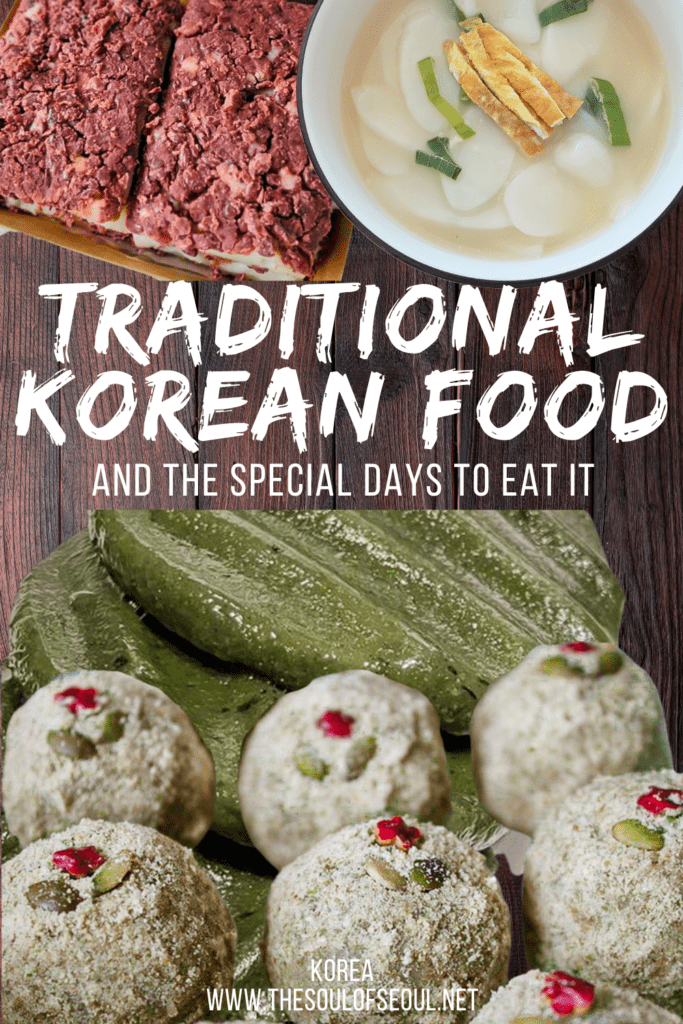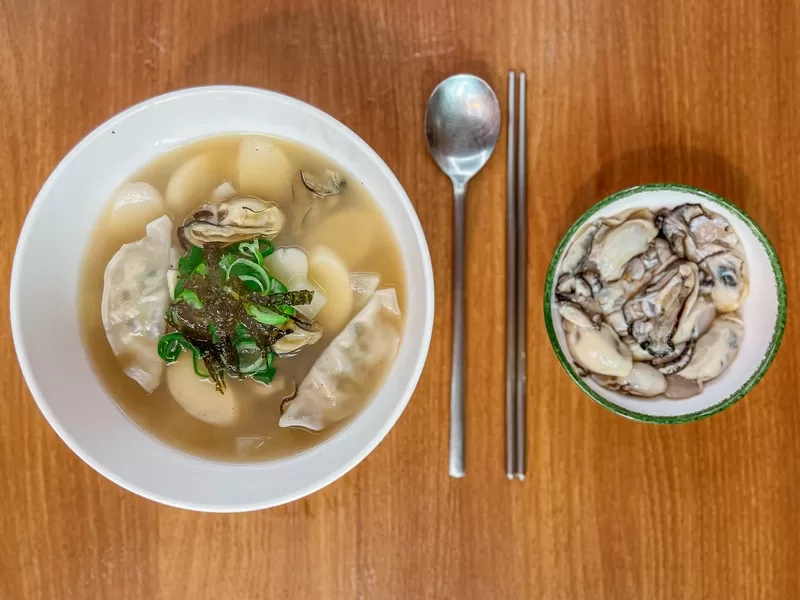The Traditional Korean Food You’re Supposed To Eat Each Month
Did you know there is a holiday on the lunar calendar every month in Korea and there’s a traditional Korean food that is to be eaten on each of these days? While you’ve probably heard of Chuseok and Seollal and maybe even Sambok, there are even more special days on the traditional Korean calendar and food to be eaten on each of these days. Holidays in Korea often involve specific local delicacies, so get ready to learn about what to eat and more importantly when.
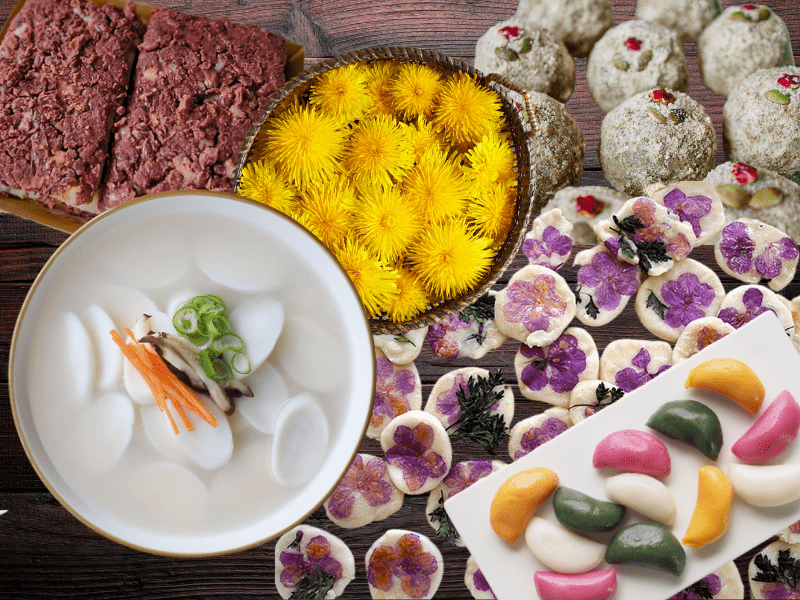
If you haven’t yet been to the Hansik Space E:eum (한식문화공간) in the Bukchon Hanok Village, make sure to check it out. It has fantastic information about traditional Korean food, alcohol, and beliefs. You can learn about the topic in this article and so much more.
- What To Know
- Traditional Korean Holidays and What To Eat
- Seollal (설날): Lunar New Year
- Chinese New Year (중화절)
- Samjidnal (삼짇날): New Spring
- Hansik (한식): Cold Food Day
- Dan’o (단오): Spring Festival
- Sambok (삼복): Hottest Days Of Summer
- Chilseok (칠석)
- Chuseok (추석): Korean Harvest Festival
- Joongyangjeol (중양절): The Mid-Autumn
- Sangdal (상달)
- Dongji (동지): The Little New Year
- New Years Eve
(This post contains affiliate links, which means I receive a certain percentage of a sale if you purchase after clicking at no cost to you. Thank you for your support.)
What To Know
It’s important to note that these are all traditional Korean holidays which means they are based off of the lunar calendar and not the solar calendar. This means the dates you see below do not coincide with the calendar you’re used to using and thus the dates on the solar calendar change each year.
Traditional Korean Holidays and What To Eat
As mentioned, food is central to much of the celebrations in Korea whether it’s festivals or family rituals and ceremonies like Jesa, the food plays an extremely important role in the festivities. While you could very easily just eat and enjoy, I personally like knowing why the food is important and what role it’s playing.
So, if you’re like me, get ready to learn all about some traditional Korean dishes and when you should definitely eat them… though you can certainly eat them any time of the year, too!
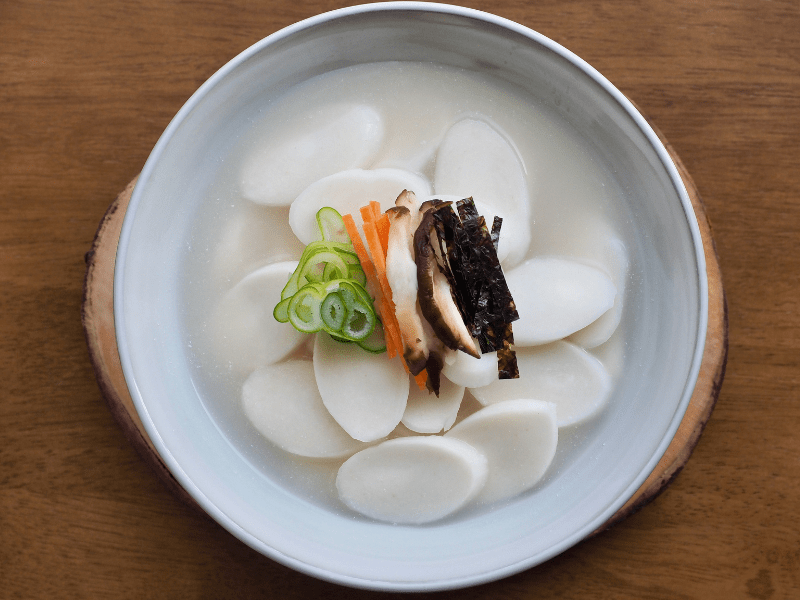
Seollal (설날): Lunar New Year
When: January 1
One of the biggest holidays for Koreans is the Lunar New Year and the dish to partake in is tteokguk (떡국). This Korean soup is made with long rice cakes cut into rounds and simmered in beef broth, though my Busan-based mother-in-law uses an oyster broth for ours.
The long white rice cakes are meant to pray for longevity and a good harvest, and the round shape of the rice cakes is meant to wish for increased wealth. If you’re planning to spend any time with a Korean family for the holidays, you’ll likely be served tteokguk.
If you’re learning Korean, it might also interest you to know that on Lunar New Year you can ask someone how old they are by saying, “How many bowls of tteokguk have you eaten?” (“떡국얼마나 먹었어요?”).
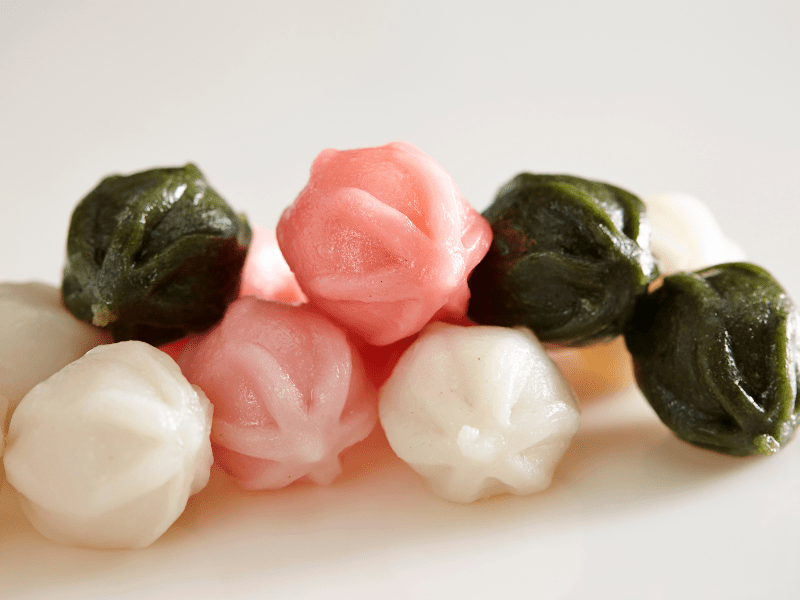
Chinese New Year (중화절)
When: February 1
Celebrated during the Joseon Dynasty to mark the beginning of the farming season, nobi songpyeon (노비송편) was given to servants to wish them a good harvest before the start of the farming season. Rice cakes were made from rice ears stored on the day of the full moon and distributed to the servants according to their age. Today, you probably notice that on Seollal, people eat songpyeon and tteokguk combining the traditions a bit.
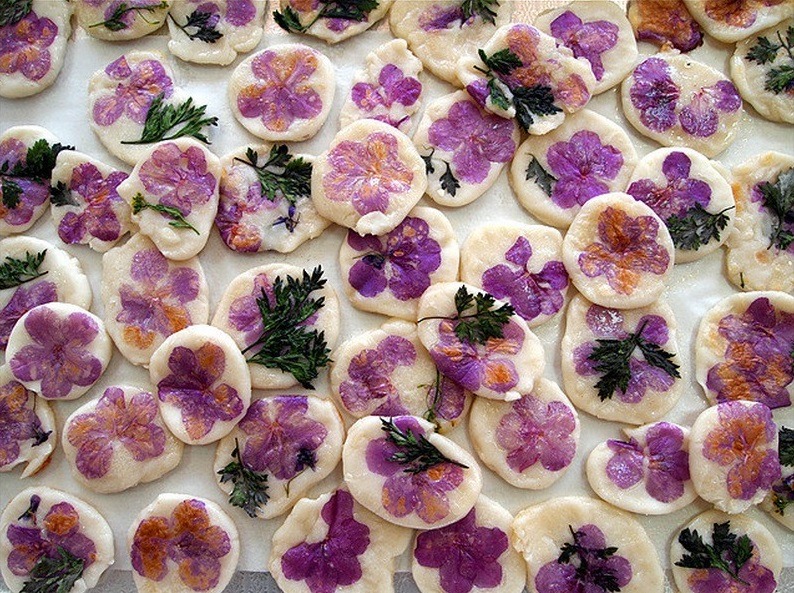
Samjidnal (삼짇날): New Spring
When: March 3
Samjidnal celebrates the new spring and is an opportunity to wish each other health and happiness for the year ahead. While most people are looking for the cherry blossoms in Seoul, each spring I try to find some of the gorgeous azalea covered mountains like Buramsan Butterfly Garden (불암산나비정원) and just south of Seoul, Wonmisan mountainside (원미산). The azaleas are so beautifully purple and pink.
While I’m finding them, the bakers among Koreans are making jindalle hwajeon (진달래 화전), a cookie-like dish made with a glutinous rice flour kneaded and flattened into a round shape and topped with azalea flowers.
Eaten with honey, the rice cookies may also have azalea flowers in water made with omija, schisandra berries, on the side. You can find this seasonal delicacy only for a very short time so get them while you can.
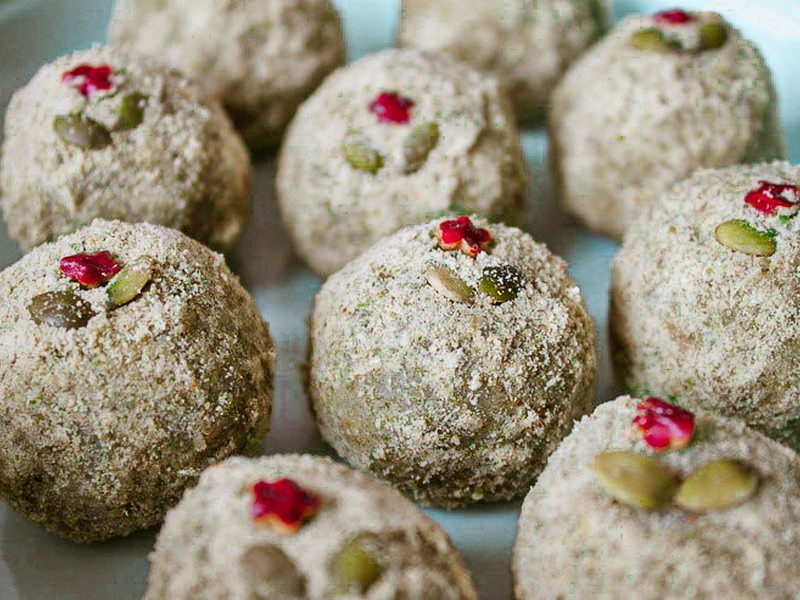
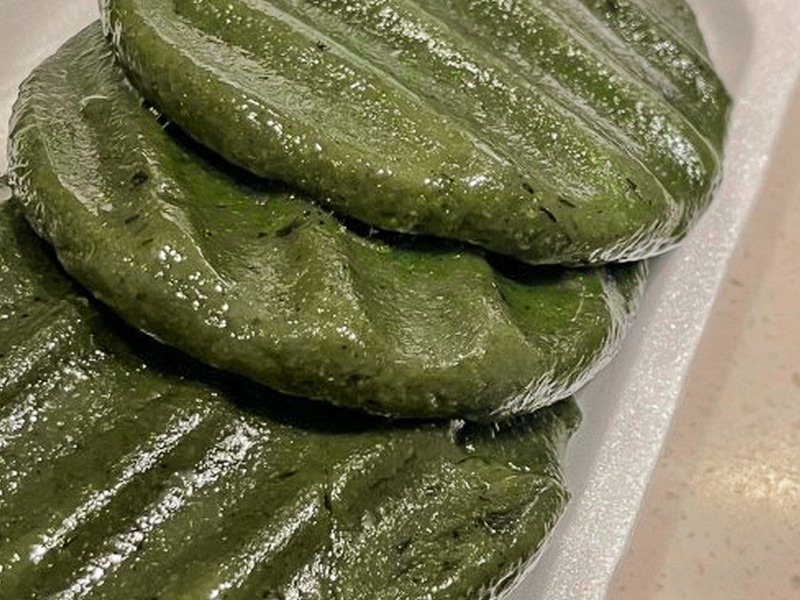
Hansik (한식): Cold Food Day
When: April
Celebrated on the 105th day after the winter solstice, this is a holiday where fire is forbidden and cold food is eaten. Ssuktteok (쑥떡), ssukjeon (쑥전), ssukdanja (쑥단자), and ssuktang (쑥탕), all made with young ssuk, or mugwort, that grows in the mountains and fields is enjoyed.
Ssuktteok, mugwort rice cakes, are my daughter’s favorite so we eat this year round, but it is especially important on this day. They are made the day before and eaten the next day to abide by the no fire rule. It is believed that eating cold Korean food will keep you healthy and free of illnesses for the year ahead. If you can’t get mugwort, perhaps just eat cold dishes on this day so you can hope for a year of health.
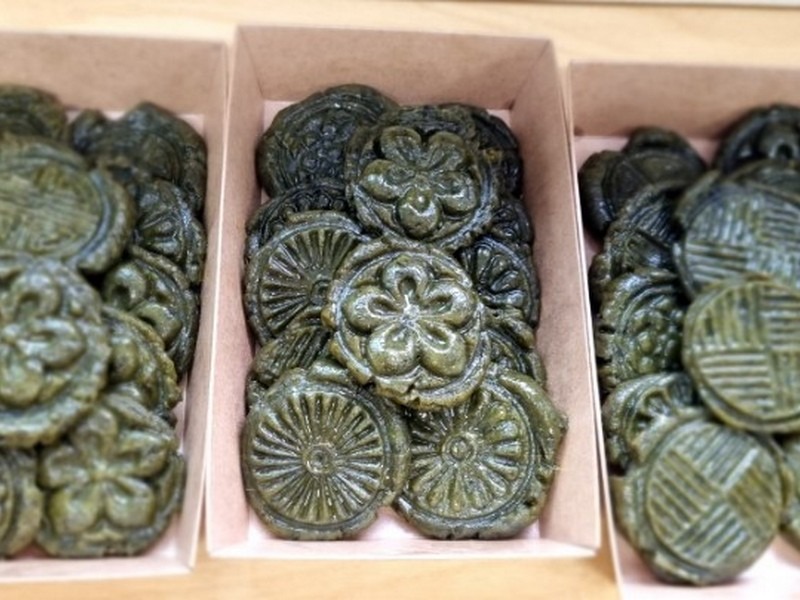
Dan’o (단오): Spring Festival
When: May 5
Dan’o (단오) marks the end of the rice sowing season. Believed to be filled with positive yang energy, Dano was a lively celebration of song, dance and wine. It is the third most traditional holiday behind Seollal and Chuseok.
The food to eat on this holiday is surichuitteok (수리취떡), a steamed rice cake made with young surigot leaves, or wormwood mixed with buckwheat flour dough. The round, flat rice cake is stamped with cartwheel-shaped pattern. Eaten on the day of the festival, the rice cake is meant to bring good health and protect against bad luck.
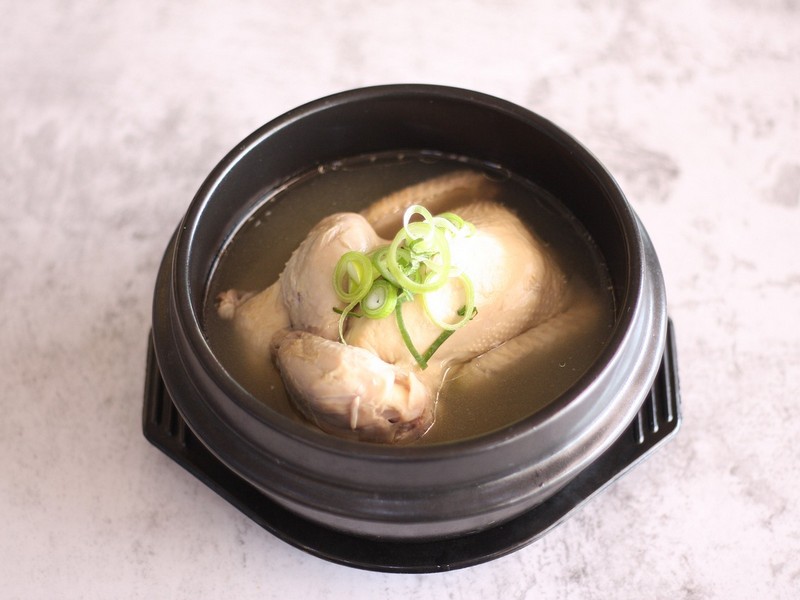
Sambok (삼복): Hottest Days Of Summer
When: June
In the summer, there are three days known as the hottest days of the season. Known as Chobok (초복), Malbok (말복), and Sambok (삼복), these three days occur during June through July. The most popular dish to eat on these days is samgyetang (삼계탕), a food eaten to beat the heat.
Chicken is simmered with glutinous rice, ginseng, dates, chestnuts, garlic, and other medicinal ingredients. It has a high nutritional value and is good for restoring energy in summer when you sweat a lot and feel weak.
While it might sound strange to eat an extremely hot dish on the hottest days of the summer, I can say from experience, it indeed does help cool you down. If you’re looking to eat samgyetang on these days, plan to get out a bit early to get in line because the best restaurants in town will have lines out the door for this simmering soup.
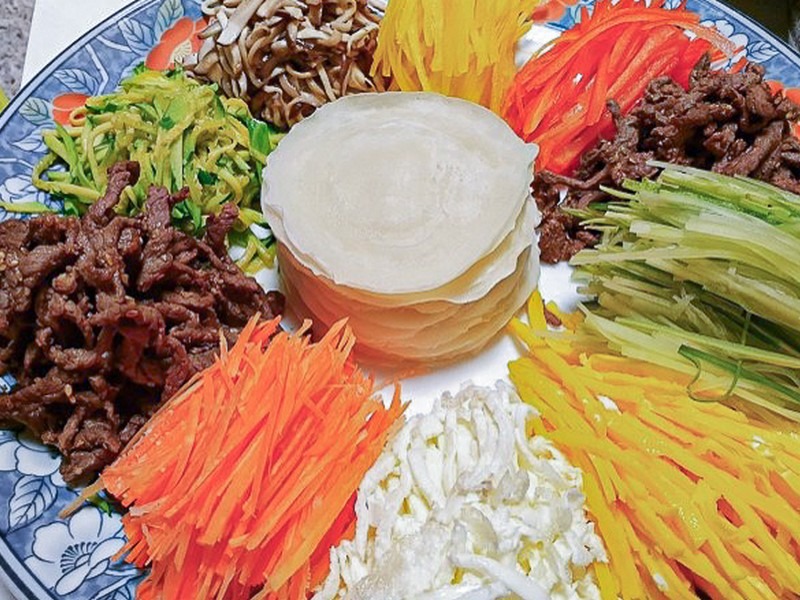
Chilseok (칠석)
Whe: July 7
This holiday originated from a legend with a warrior and a weaver who met once a year at a bridge built by crows and magpies. The dish to eat is miljeonbyeong (밀전병) and milbukkumi (밀부꾸미), thinly battered wheat flour harvested around Chilseok and mixed with vegetables such as zucchini, cucumber, and green chili peppers and then fried in oil. Shredded beef is sometimes added as a filling. When I worked at a high school in Korea, this was even served for lunch around this holiday.
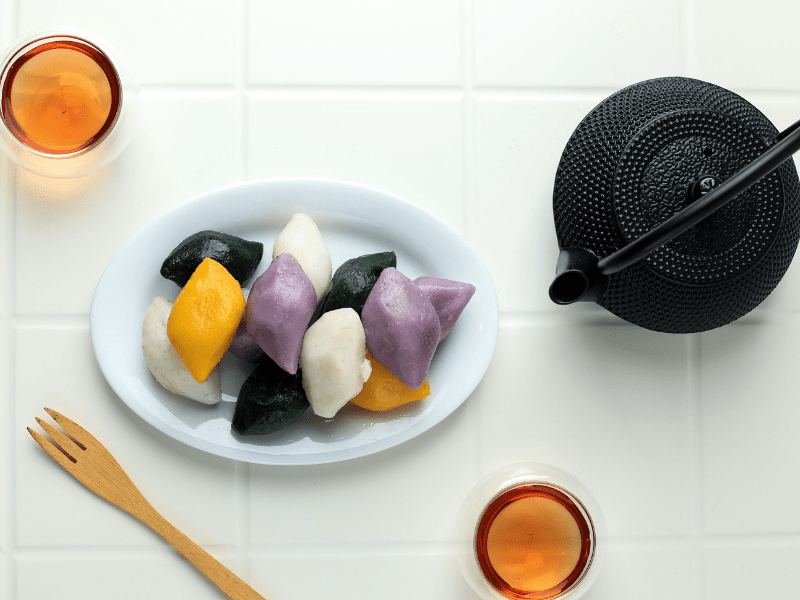
Chuseok (추석): Korean Harvest Festival
When: August 15
On August 15th, the first grain and fruit harvest of the year is offered to the ancestors. Chuseok is one of the biggest holidays in Korea so you’ll find songpyeong everywhere leading up to the festivities.
Songpyeon, or rice cakes made from the year’s harvested rice and filled with sun grains such as mung beans, sesame seeds, and sun chestnuts, shaped and then steamed with green pine needles is enjoyed. Chuseok songpyeon was called Oryeol Songpyeon (오려송편) because it was made with freshly harvested rice to distinguish it from other songpyeon.

Joongyangjeol (중양절): The Mid-Autumn Festival
When: September
Gukhwa-ju (국화주) is a liquor made with yellow chrysanthemums that bloom in the mountains and the fields. Sometimes chrysanthemums are made into a liquor or just set on top to float. Poorer people used to just float chrysanthemums in rice wine. It was thought that drinking chrysanthemum liquor, with its fragrant aroma and fine color during the Mid-Autumn Festival would ensure a long and healthy life.
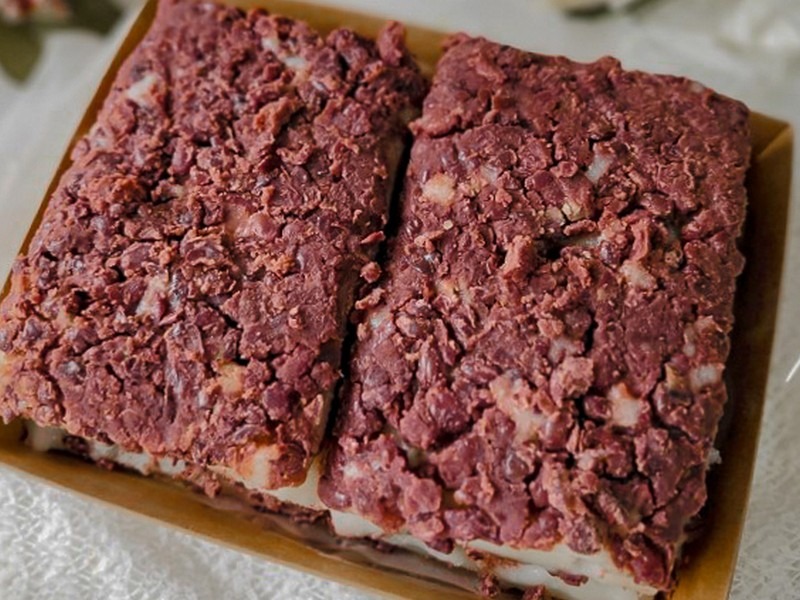
Sangdal (상달)
When: October
October is the most sacred month of the year and the month when the Jecheon ritual is held to thank the heavens for the sun’s grain. If you work at a school in Korea, you may notice your manager or even parents of students bringing a different kind of rice cake to share around.
Red bean sirutteok (붉은팥시루떡), a rice cake made with red bean paste and buckwheat flour steamed and topped with red beans to ward off evil spirits and ward off corruption is popular around this holiday. Red bean sirutteok is the most common traditional sirutteok as well as a representative Korean New Year’s cake.
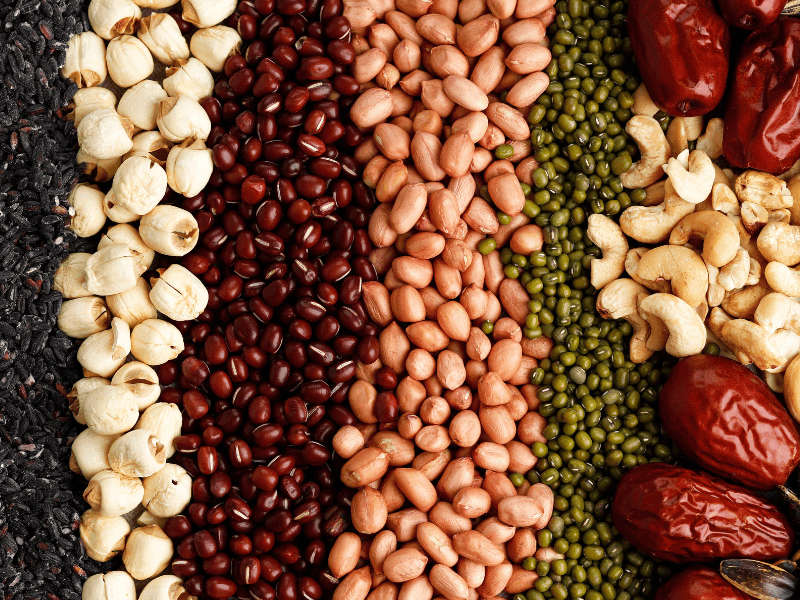
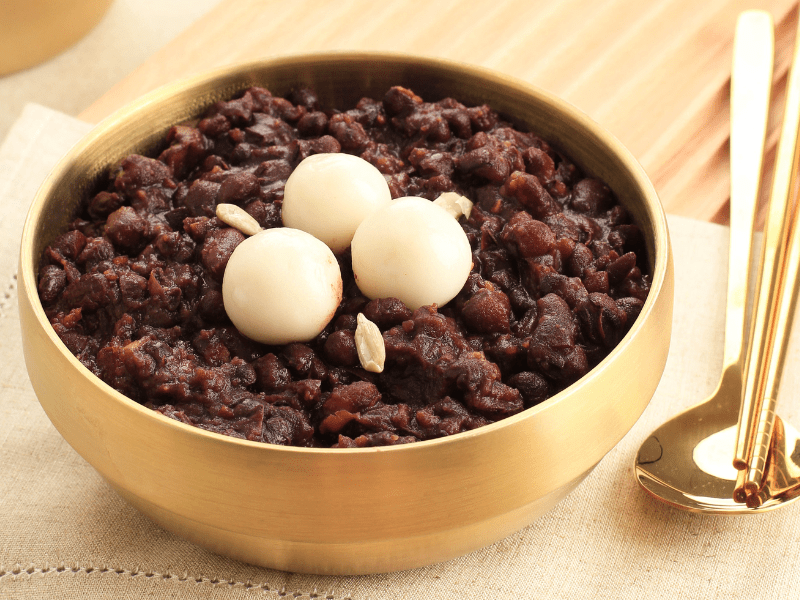
Dongji (동지): The Little New Year
When: November
The day with the shortest light hours and longest night of the year is Dongji and this is when to eat patjuk (팥죽). Patjuk is a red bean dish that has been boiled and mashed into a porridge. Glutinous rice in the shape of little bird’s eggs top the dish.
Red bean porridge is a food that wards off ghosts and people used to share red bean porridge with their family and neighbors on the winter solstice to pray for good health and ward off bad luck in the new year. You can find this everywhere from Gwangjang Traditional Market to the every Korean porridge restaurant in town.
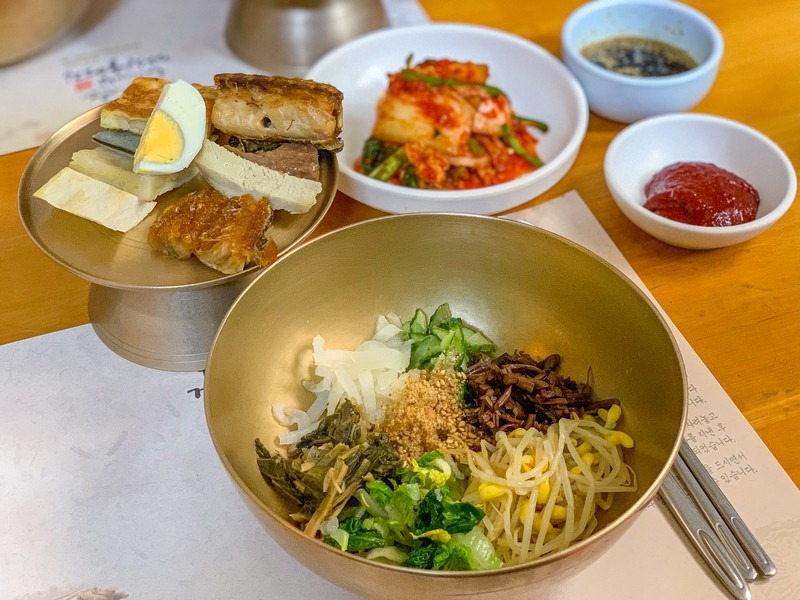
New Years Eve
When: December
Goldongban (골동반) is a rice dish that is eaten together on New Year’s Eve to get rid of all of the leftover food in the house without letting it go to waste. Goldongban is a Korean word for bibimbap and this dish is the origin of the now popular bibimbap dish that we eat all year round in Korea. You were probably even served bibimbap on the airplane coming to Korea.
Some traditional holidays in Korea are more celebrated than others, but if you have a Korean mother-in-law like me, then you might want to know about the other traditional holidays that come up on the traditional lunar calendar. What are you most excited to eat this year?
Did you like this post? Pin IT!
